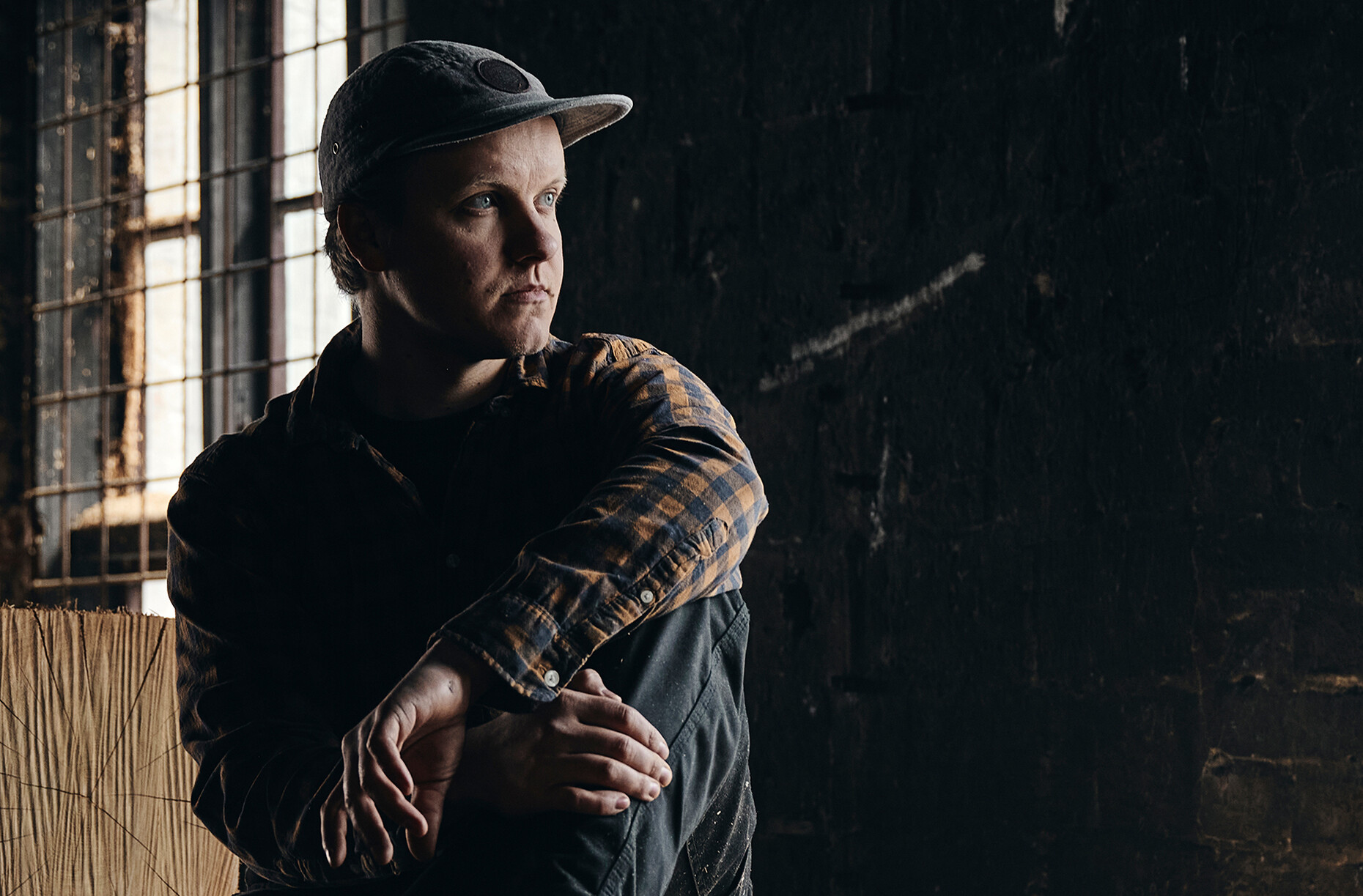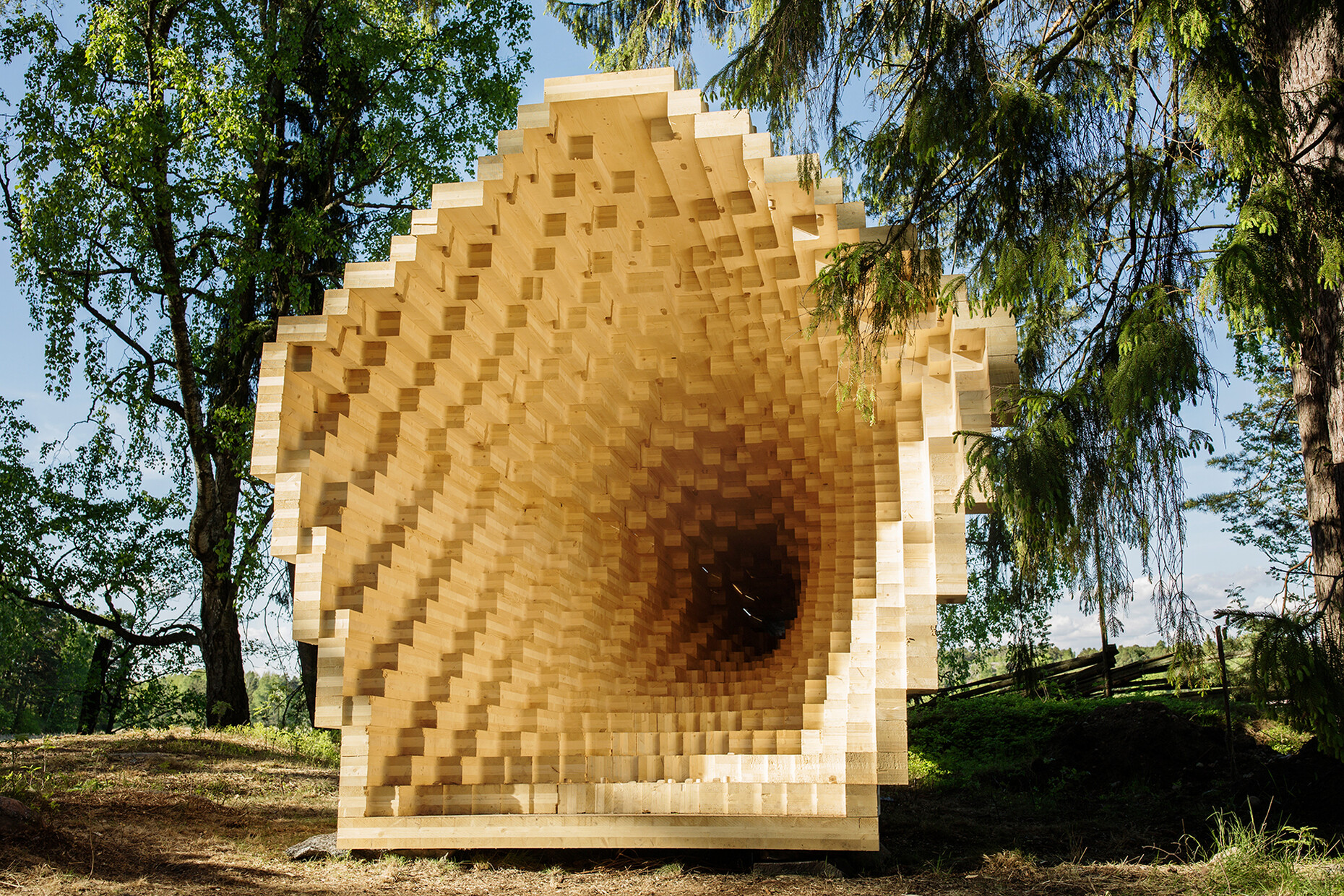At the interface
Antrei Hartikainen's works show the sensitivity, ingenuity and craftsmanship that the interface between art and design requires. In parallel, it is significant for him to cultivate the traditions of the craft and to combine them courageously with new techniques in order to constantly develop them further. During a three-week residency at Hollenegg Castle in July this year, Hartikainen was inspired by the impressive space and rich history of the place and chose the space in between for his work to elaborate and emphasise its underlying structures like layers. The results will be on display in the Ashes & Sand exhibition at Hollenegg Castle from May 2023. He explains his approach in an interview.
Mr Hartikainen, as a master carpenter you prefer to work with wood, but recently you have also discovered the material glass for yourself - are there any interfaces?
Antrei Hartikainen: In my current project, the unifying element is only the wood used for the glass forms. But there are several works where I combine glass and wood. We will see if any of this develops.
What are the challenges and opportunities of working with glass compared to wood?
Antrei Hartikainen: When it comes to sculptures, handmade products or collectors' items, one of the biggest differences for me is that I cannot control the processing of the material myself, but always depend on the cooperation with the glassblowers. After I have developed an idea with the material wood, I can realise the work all by myself if necessary. This circumstance is both edifying and problematic for me. Working with glass, on the other hand, is surprising and very fascinating. The process as well as the glass as a physical material are very delicate, demanding and require a certain tolerance for imponderables in the various production steps. The element of surprise in the material's behaviour also requires a constant willingness to change.
Where do you get the inspiration for your designs?
Antrei Hartikainen: I am often inspired by nature and man-made landscapes, by the moments I observe in nature and everyday life, and by the scales and degrees of detail in architecture.
Do craft methods also influence the visible end result of your work or do you rather look for new ways to realise the images in your head?
Antrei Hartikainen: In some cases I want to emphasise the qualities of a certain technique, which then also affect the visual result. I always question the perception of the material I am working on, think about what it is suitable for and what techniques I can work with. Sometimes the planned work leads to a particular material or technique, but just as often it itself guides the process, in which case the working pattern changes in many ways. I try to use traditional working methods and techniques extensively, but at the same time combine them with modern technology in the best possible way.
How do you combine the design of functional products with artistic installations in your daily work? Does one condition the other?
Antrei Hartikainen: That's exactly the interesting middle ground between art, design and craft. Everything influences everything. A developed product or piece of furniture can be a preliminary idea for a sculpture or an installation. Likewise, a single piece can be an idea for a serially produced, practical product. The processes between the different areas are also very different and thus feed the ideas in many ways.
Do you base your designs more on the form or on the users?
Antrei Hartikainen: I think first about aesthetics and then about functionality - I also start from the forms and material properties as well as the limits and possibilities of the technology. I try to find suitable points of contact for the users. The main goal is to create something that is a pleasure for the eyes as well as for the mind. Purely in terms of use, it is very difficult to create such a relationship. Even though in many cases it is of course better, especially in furniture design that aims at mass production, to start from the production possibilities, the needs of the end users and the practicability and to develop a vision of the whole within this framework.
A project or product that you would like to realise in the future?
Antrei Hartikainen: I don't have a specific project in mind that I would like to realise. I would like to continue doing versatile projects across the board and further diversify the range of materials. I hope to realise a variety of projects where I can specifically use the special expertise from other fields as well.
Is there an award or product that is particularly close to your heart and if so, why?
Antrei Hartikainen: When I was named Young Designer of the Year in Finland in 2018, the honour encouraged me to continue on my own path, even though I didn't go through any specific design training. The recognitions have given me the impetus to realise that education does not necessarily play an essential role in being successful in design.



























